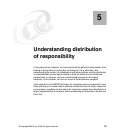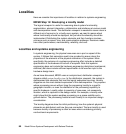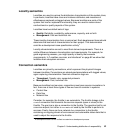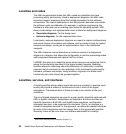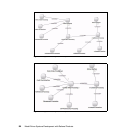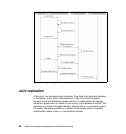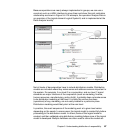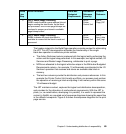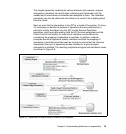
Chapter 5. Understanding distribution of responsibility 87
Because operations are nearly always implemented in groups, we can use a
construct such as a UML interface to group them and show this joint realization
relationship as shown in Figure 5-4. For example, the operation Analyze Data is
an operation of the logical element Logical System3, and is implemented at the
Data Analysis locality.
Figure 5-4 Joint realization diagram
Not all levels of decomposition have to include distribution models. Distribution
models are included where they make sense and address concerns important to
the system. For example, if our level 0 is a corporation, and our level 1 logical
elements are major functions of the corporation (such as marketing, finance,
human resources, manufacturing, and so forth), it probably does not make sense
to do distribution modeling at that level. It is likely the various functions
(operations) of say, marketing, are not easily located to a particular place.
Distribution modeling would likely start at the next level.
In practice, the exact sequence of the modeling work at a given level varies
depending on the needs. In some cases, the logical model is created fully before
proceeding to the distribution model. In others, some of the logical model is
created, and then validated using distribution modeling before more of the logical
model is developed. Multiple iterations are often used to refine the models as



